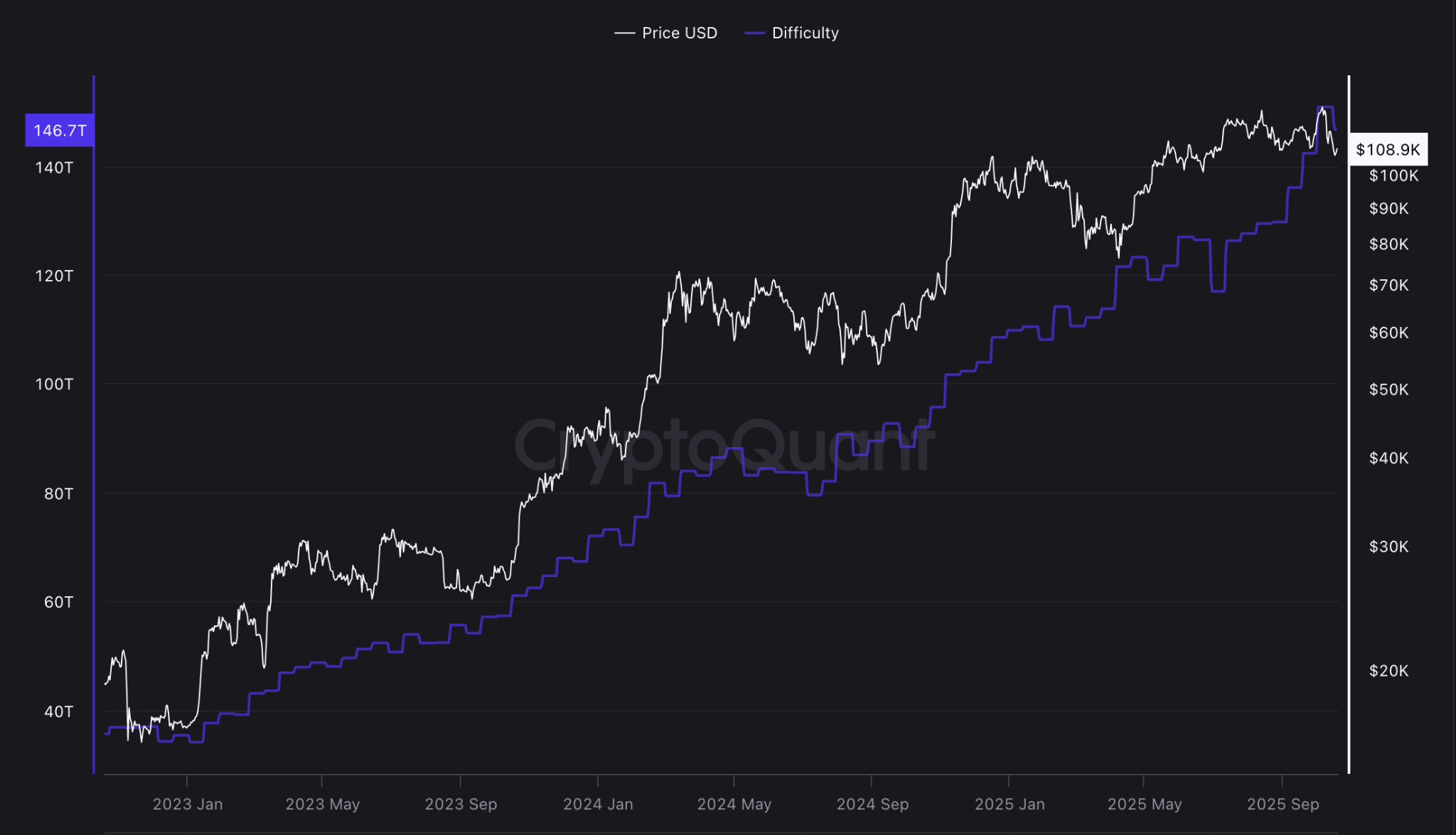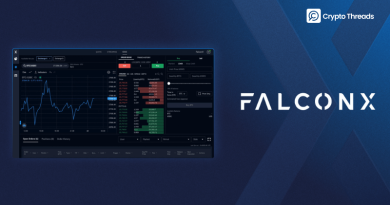Bitcoin Mining Becomes Easier – But Not for Long, as Hashrate Hits All-Time High
- Bitcoin mining difficulty dropped 2.7% to 146.7 trillion amid record-high network hashrate.
- The hashrate surpassed 1.2 trillion hashes per second, marking a new all-time high.
- The next difficulty adjustment on Oct. 29 is expected to increase mining difficulty again.
- Miners are diversifying into AI data centers to offset declining profits.
- Trade tariffs and hardware supply issues pose new challenges for US-based miners.
Bitcoin mining has temporarily become easier after a recent difficulty adjustment, but the relief is expected to be short-lived as the network’s computing power, or hashrate, continues to soar. According to data from CoinWarz, Bitcoin’s mining difficulty fell by about 2.7% to 146.7 trillion on Friday, down from the previous record of 150.8 trillion. The drop coincided with the network’s hashrate reaching an all-time high of over 1.2 trillion hashes per second earlier in the week, signaling the highest level of computational activity ever recorded on the Bitcoin network.
Despite the slight decrease in difficulty, the elevated hashrate means competition among miners remains fierce. Data from CryptoQuant shows the network’s hashrate has stayed above 1.2 trillion even after a minor pullback from Tuesday’s peak. CoinWarz forecasts that the next difficulty adjustment, expected on October 29, 2025, will push difficulty back up to 156.9 trillion, effectively erasing the recent drop.

The record-breaking hashrate reflects growing participation in Bitcoin mining, but it also increases operational pressure on miners. With block rewards halved earlier in the year and Bitcoin’s price still fluctuating, profitability margins have tightened. Miners now need more powerful and energy-efficient rigs to maintain competitiveness, leading to escalating hardware costs and energy consumption.
Mining companies are responding by diversifying into alternative revenue streams, particularly in artificial intelligence (AI) data centers and high-performance computing (HPC) operations. Industry leaders like Core Scientific, Hut 8, and IREN began reallocating resources toward AI infrastructure in 2024 to offset the volatility of crypto revenues. However, this pivot has created new friction, as both AI and Bitcoin mining industries are competing for access to cheap, reliable energy sources.
Beyond the market challenges, miners are also dealing with regulatory and logistical headwinds. US President Donald Trump’s trade tariffs have increased import costs for mining hardware originating from China and other Asian countries. Mining rigs from China now face tariffs as high as 57.6%, while machines from Indonesia, Malaysia, and Thailand face 21.6% levies. These trade restrictions have placed US-based miners at a disadvantage compared to counterparts operating in tariff-free regions.
Further complicating matters are potential supply chain disruptions tied to escalating US-China trade tensions. Any new export controls on computer processors, chips, or electronic components could severely constrain the supply of specialized mining equipment, slowing down upgrades and expansions across the sector.
Despite these challenges, the rise in hashrate underscores the continued confidence of miners in Bitcoin’s long-term prospects. The combination of higher competition, adaptive strategies, and ongoing institutional investment suggests that while short-term profitability may fluctuate, the underlying mining ecosystem remains robust and innovative.
Final Thought
Bitcoin mining may have briefly become easier, but the relief is temporary. With network hashrate hitting record highs and the next difficulty adjustment set to tighten conditions, miners face an increasingly competitive environment. As the industry pivots toward AI and other high-performance computing applications to sustain profitability, its evolution will depend not only on market dynamics but also on global trade policies and access to cutting-edge hardware.



